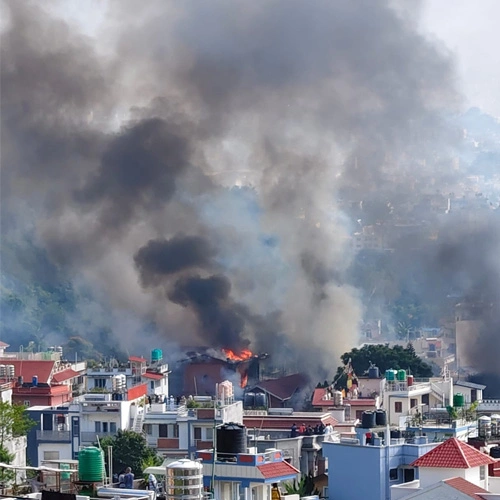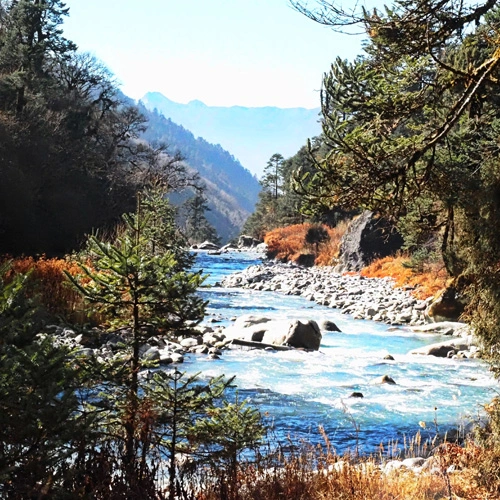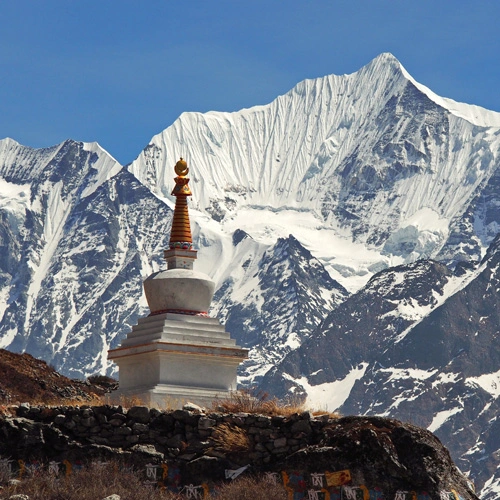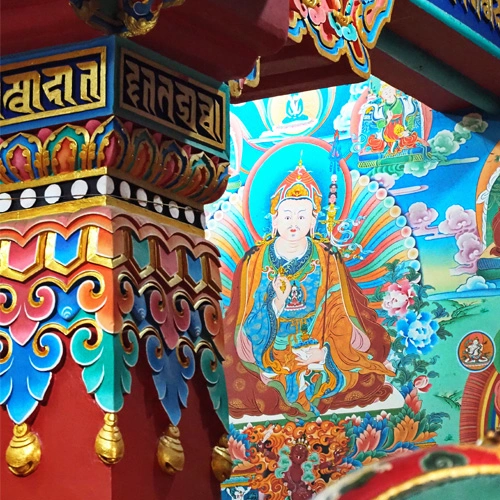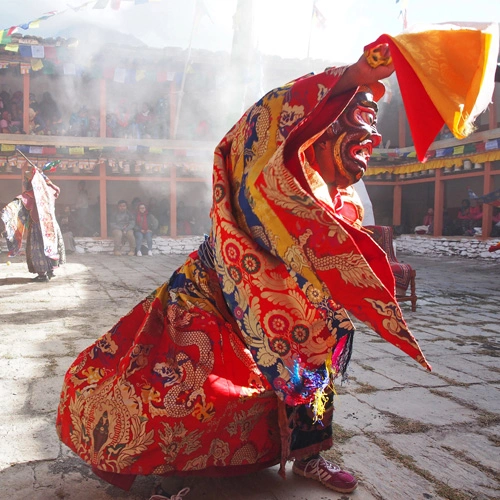Articles
![GEN-Z: WHEN ENOUGH IS ENOUGH IN NEPAL]()
GEN-Z: WHEN ENOUGH IS ENOUGH IN NEPAL
On 8 September 2025, peaceful demonstrations against government corruption and nepotism were held all over Nepal, the focus of attention inevitably being that taking place in Kathmandu. The protestors were Gen-Z, social media savvy and dressed in school and college uniform to symbolise their status. But live ammunition was fired, violence broke out, and, over the course of the next few days, arson and looting were followed by the installation of a new interim government. Louisa Kamal watched the smoke and fires burning across the Kathmandu Valley: read her insightful article into what exactly happened.
Read More![ROLWALING BEYUL & ANIMAL LIBERATION]()
ROLWALING BEYUL & ANIMAL LIBERATION
For me, as a trekker, writer and photographer, one of Nepal’s most beautiful and captivating beyul—hidden sacred valleys—is Rolwaling in Dolakha District. The name’s two components—rolwa meaning ‘furrow’, and ling ‘place’ in Tibetan—graphically describe the nature of the deep, steep-sided Rolwaling Valley in its lower stages, running west-east parallel to the border with Tibet. Follow me as I trek up the beyul at the beginning of December, encountering snow in the uppermost village of Naa and find Tso Rolpa frozen, icy and enchanting.
Read More![BEYUL: THE HIDDEN SACRED VALLEYS OF NEPAL]()
BEYUL: THE HIDDEN SACRED VALLEYS OF NEPAL
In the eighth century, the tantric Buddhist Vajra master Guru Rinpoche travelled extensively in the Himalayan swathe, spreading Vajrayana and identifying places endowed with special spiritual qualities. By following his own religious practices at these sites, their inherent ‘unworldliness’ was further enhanced and intensified. Although Guru Rinpoche revealed the location and nature of many of these places in his own writings, the details of others were concealed as part of the body of hidden treasures or terma, to be later revealed by tertön or treasure seekers. One specific type of terma were the hidden valleys or beyul, dedicated safe havens for devout practitioners of Buddha dharma in times of critical need. Read the article learn more about these hidden valleys and their whereabouts in Nepal.
Read More![MARATIKA: WHERE DEATH WAS OVERCOME]()
MARATIKA: WHERE DEATH WAS OVERCOME
On a hilltop in Nepal’s Mahabharat Range, about 220kms east of Kathmandu in Khotang District and at an altitude of approximately 1400m—a little higher than the capital itself—is Maratika. According to Dilgo Khyentse Rinpoche, former head of the Nyingma school of Tibetan Buddhism, Maratika ranks alongside Bodhgaya (India); Bodhisattva Manjushri’s mountain home of Wu-tai-shan (Shanxi Province, China); Marpo Ri Hill, on which the Potala Palace is situated (Tibet); and the two as yet ‘unrevealed’ sites of Udyana and Shambhala, as one of the six holiest places in the Buddhist world. Why this should be so is both fascinating and compelling. Read the lavishly illustrated article to find out more.
Read More![CHAM: DANCES OF THE GODS]()
CHAM: DANCES OF THE GODS
At a time when the rich Tibetan culture and religion are being actively suppressed in Tibet itself, one has to look elsewhere in the Himalayan swathe to find places where they are nurtured and thrive. This is particularly true of the great cycles of Cham, aka Lama Dance or Dances of the Gods. Those still being performed as part of the Monlam Chenmo—Tibetan New Year festivities—at the grand monasteries in the former Tibetan areas of Kham and Amdo are increasingly commercialised and bastardised, it is in places like Nepal where these traditions are being preserved and cherished. In a richly illustrated article, Louisa Kamal explains the history and tradition of Cham and its strongholds in Nepal.
Read More

